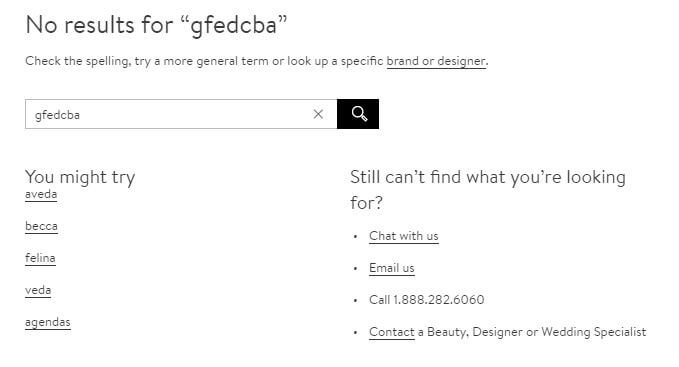When it comes to determining budgets for the year, few companies make internal search a priority. In fact, only 15% – 20% of large companies and less than 4% of small companies choose to dedicate resources to internal search. Though often neglected, internal search has a large impact on user experience. When users visit your website, they continue their journey in one of two ways – they browse or they start a search. Breaking down the numbers, data shows that up to 45% of your visitors will use internal search and those that do are five to six times more likely to convert.*
So how do you help the process along and turn these searches into customers? A few changes can go a long way in speeding up the process and helping guide your visitors in the right direction. Below are five ways to optimize your internal search:
1. Make Your Search Bar Stand Out
When it comes to internal search, your search bar should be a top priority. Make your search bar a prominent feature on your site by offsetting it in a different color or adding text inside the box, such as “Search…” or “Enter Search Term.” These elements make your search bar more visible and act as a visual cue for site visitors.
Pottery Barn (pictured below) has done a great job of making sure their search bar is visible and easy to access, displaying it directly beside the bright red Cart button and compelling users to search by posing a question.

2. Add Auto-Complete Suggestions
From text messaging to online searching, auto-complete isn’t just something people are familiar with – it’s something they’ve come to expect. Though a valuable addition for most businesses, auto-complete is especially important for ecommerce sites. If used correctly, the feature can help users arrive on a product page more quickly, accelerating the purchase process. Once enabled, be sure to keep track of the unsuccessful queries in search logs to ensure that users aren’t given suggestions that will lead them to a zero results page.
3. Make Your Zero Results Pages Shine
Few things make visitors want to leave a site more than an empty search results page. For many, it signals that a site doesn’t have what they’re looking for, leading them to leave. Avoid missed opportunities by adding content to your zero results pages. Providing links to commonly visited pages or tips for retrying a search can improve the user experience while limiting the risk of an exit.
Here is a great example from Nordstrom. They make it easy to begin a new search by adding clickable suggestions and multiple contact options.

[spacer]
[spacer]
[spacer]
[spacer]
[spacer]
[spacer]
4. Add Filtering Options to Narrow Results
For businesses with multiple segments, product lines, or content topics, adding the option to filter can help users narrow down results and significantly speed up search times. B2B businesses can test filters for company size or business unit, while B2C businesses can add in product category or price filters. To get an idea of what filters might be best to include, start by analyzing your internal search data. If queries often contain a product name or color, that might be a good place to start.
5. Use Promoted Results to Drive Engagement
Similar to paid search ads on Google or Bing, promoted results in internal search appear at the top of your search results page and can incorporate elements such as a headline, description, and call-to-action. Incorporating these types of results into your internal search allows you to control search results placements and quickly direct users to high value pages on your site. Start by mining your internal search data and analyzing top queries over time. From here, you can begin writing tailored internal search “ad copy” to best fit commonly searched queries.
The example below, inspired by Linda Caplinger’s presentation on Internal Search Optimization at Pubcon Las Vegas 2016, demonstrates Symantec’s use of promoted results. A simple search of “antivirus” returns multiple results, with two conveniently placed promoted results highlighted in blue.

Whether you start out with some small changes to your search bar or reinvent your search function altogether, dedicating time to optimize internal search can have a substantial impact. When deciding where to begin, take a look at your data. Check to see which queries frequently result in an exit and which ones result in a purchase. Analyze this data and use it as a launch pad to transform your internal search from okay to excellent. For more background and tips on using internal search data, stay tuned for Jeff’s post next week.
*Statistics listed above were taken from John Sherman’s presentation at Pubcon Las Vegas 2016.
Is your site optimized for search? We can help. Take a look at our SEO capabilities.
